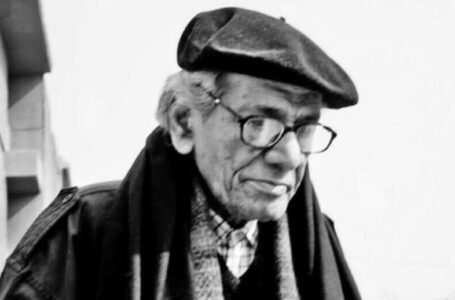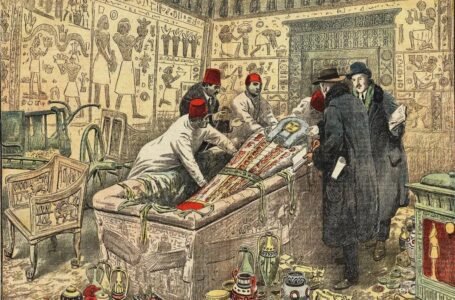War on the Silver Screen: How Cinema Captured the Horrors and Heroism of Conflict

-Anushka Sengupta
In all its unexpected acts of bravery and devastating consequences throughout history, War has long been one of the most inspiring subjects for filmmakers. Cinema’s unique visual and emotional medium presents enormous possibilities to convey the terror, trauma, and triumphs of wartime as no history book ever can. Films such as Schindler’s List (1993), Saving Private Ryan (1998), and even Haqeeqat (1964) don’t simply entertain, they function to witness, teach, and preserve history for future generations. This essay looks at how these masterpieces have depicted war, not just as a backdrop to battle, but as a rich landscape to study humanity’s most deadliest tragedies and most heroic victories.
Schindler’s List (1993): The Indifference of Conscience
Steven Spielberg’s Schindler’s List is widely considered one of the most haunting cinematic testimonies to the Holocaust. Inspired by the true account of Oskar Schindler, a German industrialist who rescued more than 1,100 Jews by hiring them in his factories, the film illustrated the brutal inhumanity of the Nazi regime and the exceptional moral courage of an improbable savior. Shot in extreme high-contrast black and white, the film’s aesthetic acts to reflect the fear, grief and despair of the concentration camps. Through the lens of cinema, Spielberg juxtaposes industrial-scale extermination in one scene with small acts of silent humanity in another, like the little girl in the red coat amidst the black-and-white terror—a reminder of the innocence lost to monstrous hate. In these two pieces, Schindler is portrayed as a beautifully nuanced character. He is a deeply imperfect man who was first moved by profit, then by the cries of his fellow men. Schindler’s List doesn’t simplify morality or romanticize war. More than a place of incredible beauty, it memorializes and recalls the horror of genocide and resistance that ever so often swells in the machinery of evil. In doing so, the film prepares a new generation of young people to understand and confront one of the darkest chapters of human history in a visceral, unforgettable way, all while recounting that chapter of history with the empathy and clarity that it deserves.
Saving Private Ryan (1998) Realism and the Reluctant Hero
In Saving Private Ryan, Steven Spielberg once again focuses the atrocities of World War II, this time through the prism of combat realism. The film’s extraordinary nearly 30-minute opening act, a brutal, unflinching depiction of miscalculation and bedlam of the D-Day itself, particularly during the now-iconic Omaha Beach landing sequence. With shaky handheld cameras, disorienting rapid cuts, and a bleak, desaturated color palette, the opening plunges viewers into the terror, confusion and the horrors of battle. The movie follows Captain John Miller and his squad of men as they search for Private James Ryan. James Ryan’s brothers have already been killed in action. What distinguishes Saving Private Ryan the most from all the other movies on this list is its depiction of war as simultaneously horrific and personal. There are no superheroics, only the grinding obligation of troops who are terrified, wounded and in many cases doubting the righteousness of their commands. While the film does not romanticize war, the focus instead is on the sacrifice, moral ambiguity and cost of survival itself. Its impact on war cinema is remarkable, creating a standard for authenticity by which all other films would be judged. Far more significantly, it has turned into a visceral chronicle of WWII’s emotional landscape—a testament to veterans that honors them not through grandeur, but with an unflinching candor.
Haqeeqat (1964): India’s Cinematic Tribute to Its Soldiers
While Hollywood’s war epics frequently occupy discourse on the global stage, Haqeeqat remains a powerful testament to how other cultures have used cinema to confront the horror and confusion of war. Directed by Chetan Anand and taking the then-recent 1962 Sino-Indian War as a backdrop, Haqeeqat is commonly considered the first great Indian war film. Inspired by real events, the film portrays an indefatigably heroic stand made by a doomed platoon of Indian soldiers, encircled behind enemy lines in Ladakh. Rather than taking the big-picture approach favoring grand strategy or global stakes like many Western war films, Haqeeqat moves in close, humanizing the soldier’s sacrifice in an under-resourced and politically complicated conflict. The film emphasizes the soldiers’ loyalty, struggle and sacrifice, striking a balance between patriotism and pathos. It also features powerful emotional subplots, from local civilians caught up in the crossfire and left behind in the fog and confusion of war to the unimaginable suffering of relatives waiting to hear if their family was murdered on the frontline. With its own music, especially the song “Ab Tumhare Hawale Watan Saathiyon” became a perfect anthem of sacrifice, the film shaped the emotional landscape. Haqeeqat was never intended to be just a tribute to fallen soldiers, it was a grand and majestic devotional dedication, yet a cinematic reckoning to one of the most painful chapters in Indian history, encouraging a unified nation again towards remembrance, resolution, and introspection.
War Cinema as Historical Memory and Emotional Attic
Put together, these films demonstrate how cinema is growing into a powerful force in building and cultivating memory of war just as it is essential in shaping that memory to begin with. War films humanize the cold, abstract casualties and battlefield statistics. They evoke empathy, draw attention to moral complexity, and often frame public perceptions of historical events. Addressing the Holocaust through the dual lens of moral courage and industrial cruelty, Schindler’s List presents a devastating landscape of human adversity and triumph. Saving Private Ryan masterfully re-creates the psychological and physical cost of combat in World War II with harrowing realism. Haqeeqat pays tribute to the courage and sacrifice of Indian soldiers in a war largely forgotten, one of the last fought without nuclear deterrence. These films act as fascinating cultural artifacts and challenge moral conundrums. They invite the audience not just to observe but to feel, to inhabit the horror, the destruction, and the fleeting moments of beauty that take place during the war. The war on the silver screen is not just a reproduction of the advantages and the disadvantages of the battles, it’s a reflection on how crises challenge people. Films like Schindler’s List, Saving Private Ryan, and Haqeeqat don’t just depict war, they instruct us on how to think about it. They challenge us to confront difficult moral dilemmas, to humanize the price of armed conflict, and to memorialize the names and faces of those whom history so readily forgets. As cinema continues to advance, its power to preserve the memories of war is unmatched. In the silence, when the final frame fades to black, it’s not only the shadow of war that we see left behind – but the lingering witness of courage, sacrifice, and the fragile hope of a future at peace.


